
Redear sunfish, also known as the ‘shellcracker.’ All photos courtesy of the author.


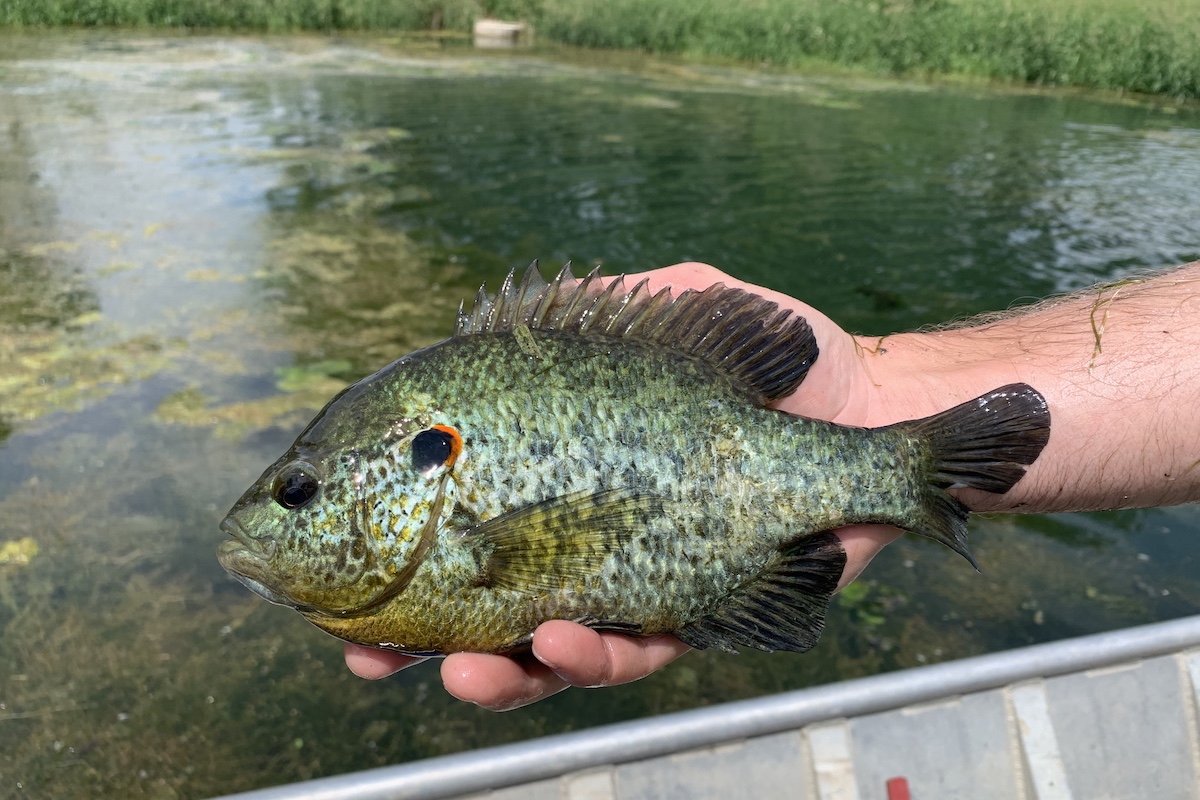
Redear sunfish, also known as the ‘shellcracker.’ All photos courtesy of the author.
The Illinois Department of Natural Resources (IDNR) Division of Fisheries has 14 District Fisheries Biologists across the state who specialize in lake and pond management. These biologists have extensive experience in pond design, watershed considerations, sportfish management, and aquatic plant identification and control. Their primary focus is to manage public lakes and ponds; however, they can assist private landowners with private pond and lake management via phone or email communications. Contacting your IDNR District Fisheries Biologist prior to making pond management decisions can help landowners save money and successfully reach their pond goals.
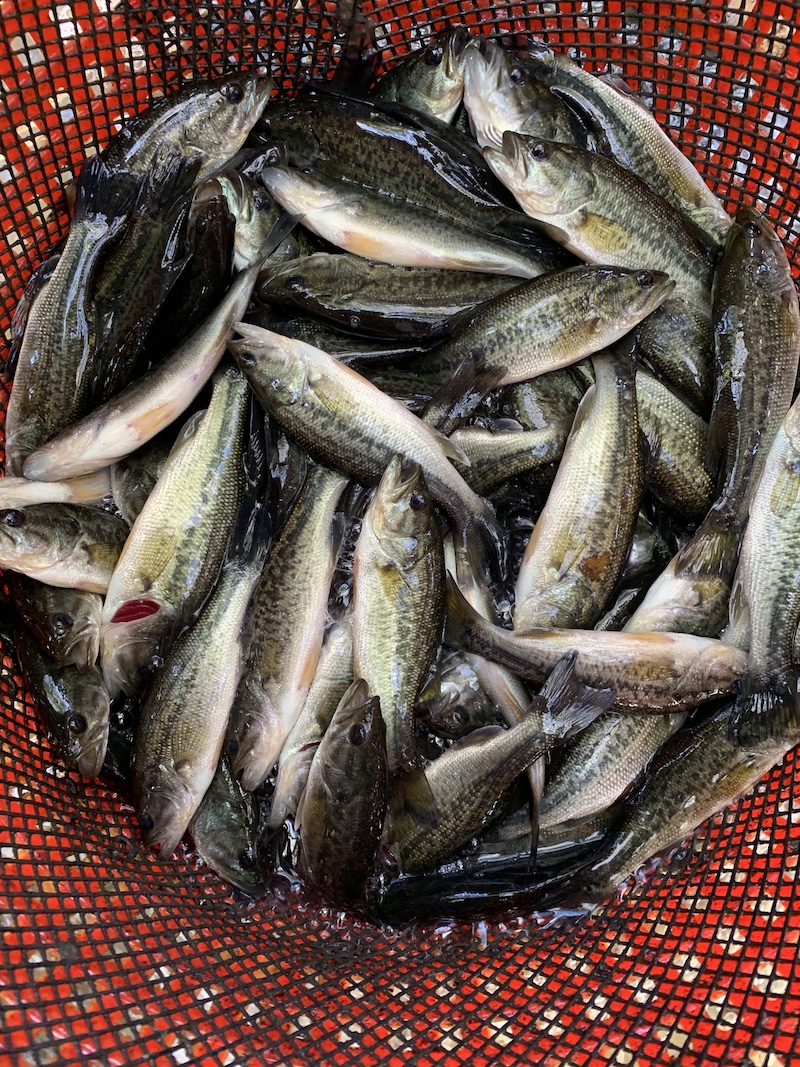
Although there are more than 190 native fish species in Illinois, only five species are commonly recommended for Illinois ponds: largemouth bass, bluegill, redear sunfish, channel catfish and fathead minnows.
Largemouth bass serve as top predators and keep the fishery in balance by controlling the numbers of small fish, thereby allowing the rest to grow to a large size. Bass grow quickly, reaching sizes of 5 pounds or greater and are exciting to catch.
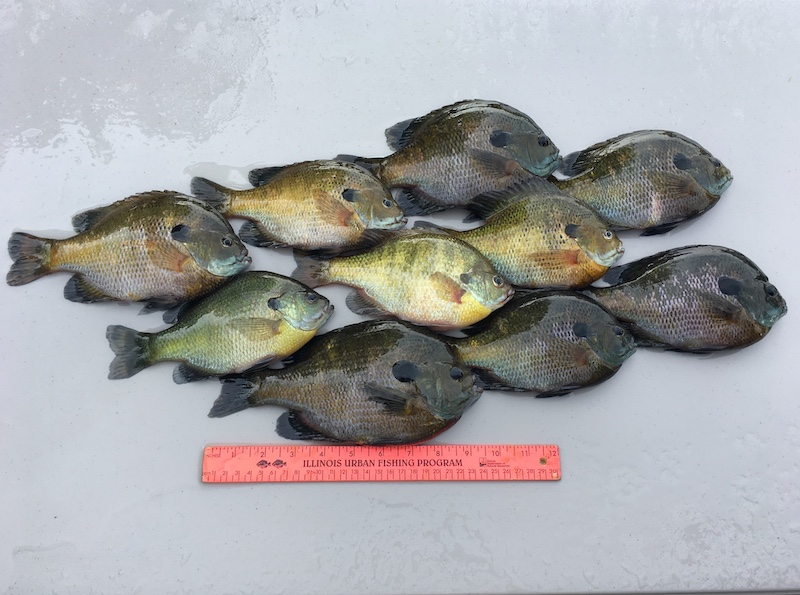
Bluegill feed on plankton and aquatic insects that occur naturally in the pond, and since they are prolific spawners, they are the prey most consumed by largemouth bass.
Redear sunfish and channel catfish are optional species, and each has potential benefits to the pond owner. A common nickname for the redear sunfish is “shell cracker” because of its tendency to eat snails and other mollusks. By reducing snail populations, redear sunfish can reduce parasites sometimes seen in fish flesh. Common parasites include the black spot and yellow grub. These parasites spend part of their life cycles in the bodies of snails, but are most often seen by fishermen as tiny yellow grubs or black specks embedded in fish fillets. Redear sunfish generally have a faster growth rates than bluegill and in some ponds, they grow much larger. Redear sunfish are a southern species and may not survive the winters in northernmost Illinois.
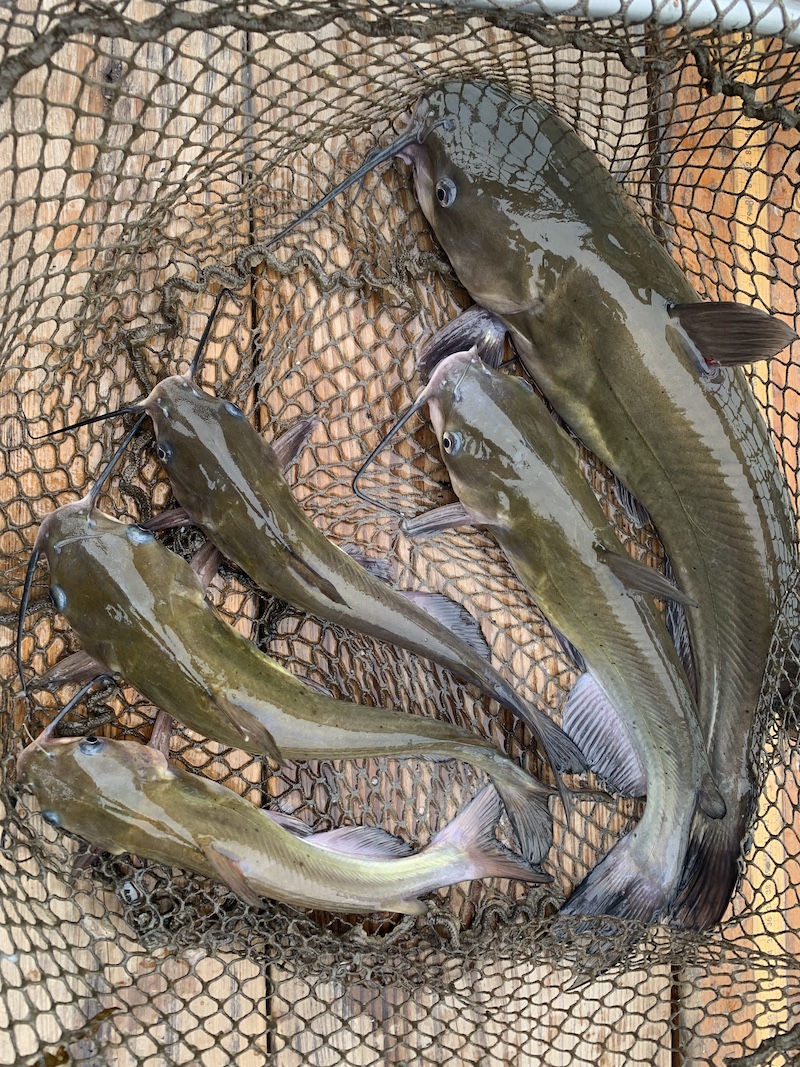
Like redear sunfish, channel catfish are optional species. Channel catfish are easy to manage in ponds because they don’t fit directly into the predator/prey balance. They can be stocked, harvested and restocked without affecting the balance of the pond. Channel catfish stockings can diversify the fishing opportunity in a pond. They are a great choice for getting children interested in fishing because they can be caught on simple tackle, are easy to hook and put up a good fight.
If a pond is properly stocked and managed, it will not need to be restocked with largemouth bass or bluegill for many years. Redear sunfish also usually do not need to be restocked; however, in some ponds, redear sunfish can fade from the fishery and may need to be restocked. Redear sunfish can be replaced by bluegill, which have a higher reproductive potential. Channel catfish populations are usually not sustained through natural reproduction if largemouth bass and bluegill are present, so supplemental stocking is needed to keep them from eventually disappearing from the pond. Channel catfish struggle to recruit to the population due to predation by largemouth bass. Additionally, channel catfish are cavity spawners, and in most small central Illinois ponds this spawning habitat is lacking, further contributing to unsuccessful channel catfish recruitment. Supplemental stockings of 8- to 10-inch-long channel catfish on an annual or biennial stocking schedule can be the solution to maintaining a catchable channel catfish fishery.
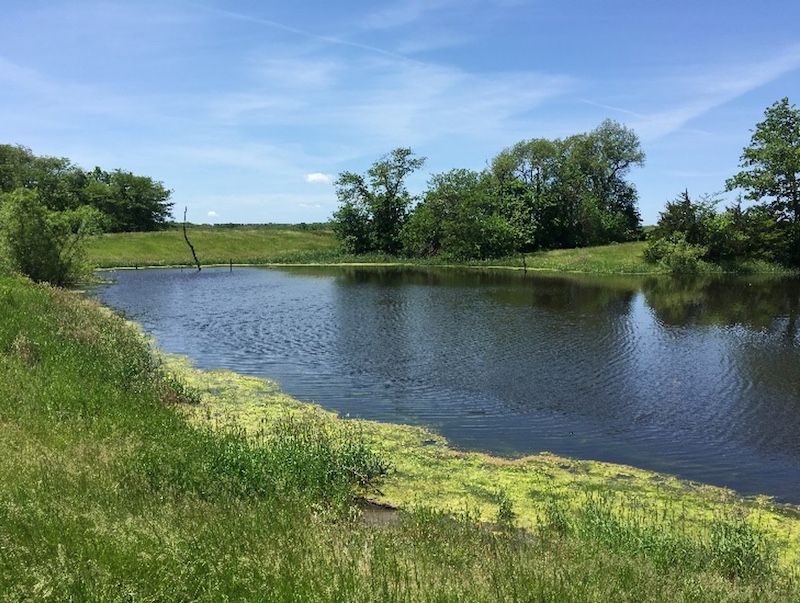
Although stocking largemouth bass/bluegill (with optional redear sunfish and channel catfish) is the most foolproof plan for Illinois ponds, there are other combinations that can work in certain situations. For example, ponds less than ½ acre may not stay balanced and can be difficult to manage. One alternative is to create a “put and take” fishery where hybrid sunfish and channel catfish are stocked with the expectation that they will be harvested and restocked.
There are numerous other pond situations and combinations of fish that can be stocked to diversify the fishery or to meet specific goals, but it is wise to discuss your pond with your local District Fisheries Biologist before placing a fish order. This phone call could save money because you will get a tailored recommendation for size, species, and number of fish, ensuring that you don’t spend money on unneeded fish.
Fish for stocking ponds are typically offered for sale in the spring and fall when the weather and water are cool enough for fish to have a good chance of surviving being handled and stocked. Fish oftentimes can be purchased locally at farm-type stores or at county Soil and Water Conservation District. If your county’s district office doesn’t hold fish sales, you can buy fish from a nearby county office. There are also numerous private fish dealers and hatcheries throughout the Midwest.
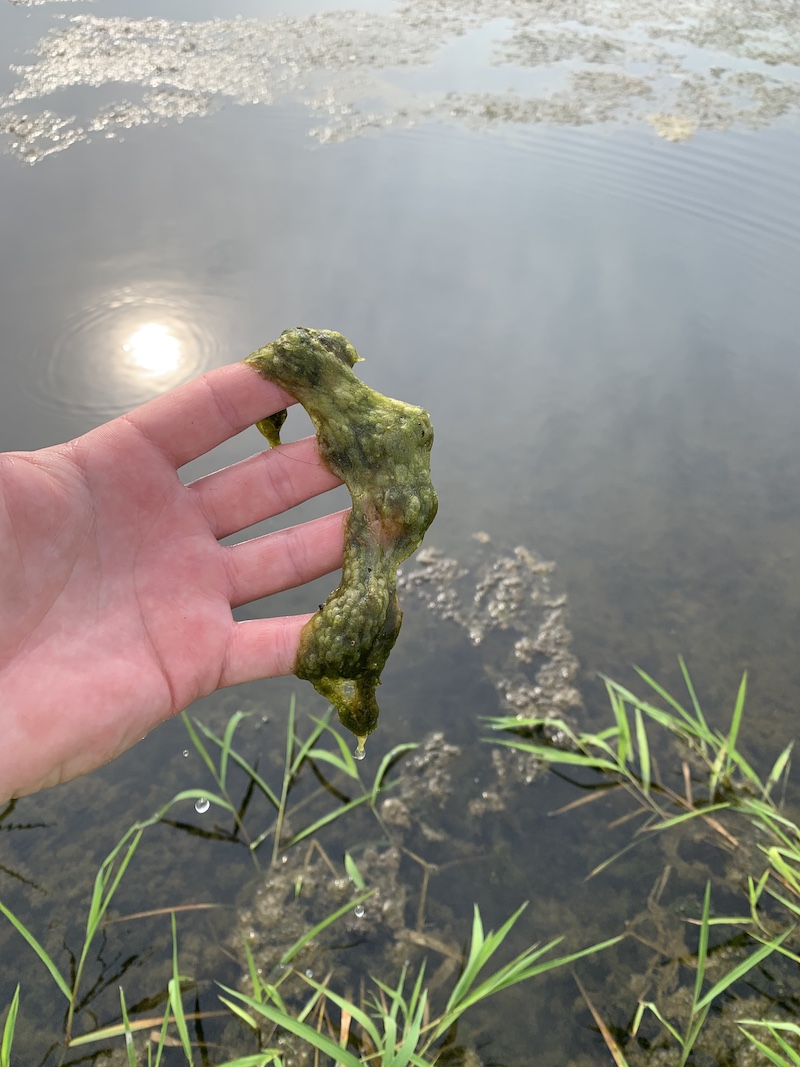
Pond owners are often concerned about managing aquatic plants in their pond. Filamentous algae is one of the most common plant types in private ponds. IDNR District Fisheries Biologists can provide management suggestions on watershed management, chemical applications, and proactive management options such as aeration and beneficial bacteria applications. In many situations ‘moss’ is actually a submersed aquatic plant, different than algae, and will require proper herbicide selection for successful control. Selecting the appropriate algaecide or herbicide will ensure more effective treatment and save the pond owner money. If you have aquatic plant issues that you’d like management consultation on, reach out to your IDNR Fisheries District Biologist for further information.
Blake Ruebush is an IDNR District Fisheries Biologist who covers 10 counties in west-central Illinois. His work focuses on managing sportfish populations in public lakes and ponds, while also providing private pond and lake management consultation to private landowners. Ruebush has presented pond management seminars with county Soil and Water Conservation Districts, the University of Illinois Extension and the Illinois Chapter of the American Fisheries Society.
Submit a question for the author